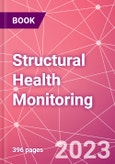The book presents the proceedings of the 9th Asia-Pacific Workshop on Structural Health Monitoring. With the increasing worldwide emphasis on asset sustainability, there is a trend toward Condition-BasedMaintenance (CBM) and Reliability-Centred Maintenance (RCM). Both approaches require diagnostic systems which detect damage and monitor structural health and/or prognostic systems that predict the future health of a structure.
Author
About the Editors
Dr Nik Rajic leads the Material State Awareness Group in the Aerospace Division of the Australian Defence Science and Technology Group. His research interests include structural health monitoring, wide-area non-destructive inspection and experimental mechanics. He engages extensively with academia and industry on development and transition of new technologies to improve capability in material state awareness.
Professor Martin Veidt is Professor in Applied Mechanics at the University of Queensland in Brisbane, Australia. He has worked in the area of ultrasonic non-destructive evaluation and structural health management for more than 30 years. He has made important contributions in guided wave ultrasonics, nonlinear ultrasonics and numerical modelling of damage initiation and progression in fibre-reinforced composites.
Professor Akira Mita is the Professor of the Department of System Design Engineering at Keio University. He obtained B.S. from Tohoku University, M.S. from Kyoto University and Ph.D. from the University of California at San Diego. His research interests include sensor network, system identification, and structural health monitoring. He is the recipient Prize of Architectural Institute of Japan, May 29, 2009 on his contribution on structural health monitoring for buildings. He recently proposed a new concept called “Biofied Building.”
Professor Nobuo Takeda, is currently Chairman, Japan Transport Safety Board (JTSB) and Professor Emeritus, the University of Tokyo. His research includes experimental micromechanics of composites and smart composite structural health monitoring (SHM) and life cycle monitoring (LCM). He has led several Japanese national projects on structural health and process monitoring of aerospace composite structures mainly based on optical fiber sensors. He was President of International Committee of Composite Materials (ICCM, 2015-2016) and Japanese Representative of International Committee on Aeronautical Fatigue (ICAF, 2009-2017).
Professor Wingkong Chiu is a member of academic staff at the Department of Mechanical and Aerospace Engineering, Monash University, Australia. His research interests include structural health monitoring and fatigue analyses of advanced composite structures. Chiu has a strong record in national and international research collaborations with academic institutions and industries. He has a passion for promoting structural health monitoring research in Australia and overseas.








